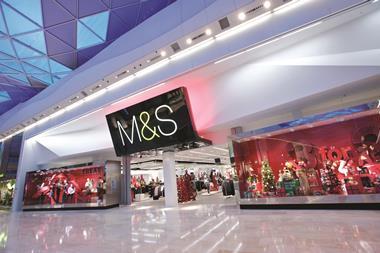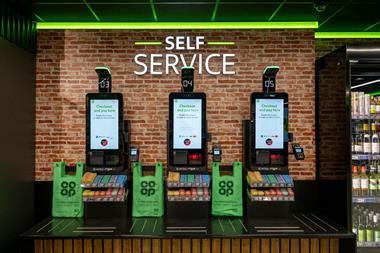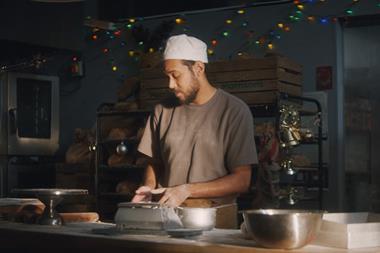Morrisons has developed a sophisticated, vertically integrated supply chain differentiated from its rivals. Alex Lawson looks at how the grocer has built its sourcing operations.

We are not getting our message across in the way we need to.” This stark admission from Morrisons chief executive Dalton Philips, made when reporting lacklustre results in the third quarter in November, highlighted both the positives and negatives of Morrisons’ business.
Problems persisted in the grocer’s most recent set of results, which revealed a 2.5% drop in like-for-likes over the Christmas trading period.
But Philips says Morrisons needs to shout more about what differentiates it. “Our points of difference are unique,” he said at the time. “Who else does vertical integration? Who else has their own farms and florists? We are not shouting loud enough about these points of difference.”
In truth, a lack of communication is likely to be only one of several reasons Morrisons is experiencing continued like-for-like falls, but it does remain a key factor. Its relative, recent underperformance is partly down to its lack of exposure to the two largest growth markets in grocery - online and convenience - as well as tired stores and tough comparatives in the previous year. In the long term, however, getting shoppers to understand that Morrisons guarantees the quality and provenance of its food through ownership of farms and factories is likely to be a draw for shoppers. Philips has made getting this message - alongside the benefits of its new Fresh Format -across to consumers a priority.
Starting afresh
Morrisons’ strategy to develop lasting links with farmers and producers dates back to the grocer’s roots in 1899 when founder William Morrison began selling eggs and butter on a stall in Rawson Market, Bradford. The retailer acquired its first produce packhouse in the 1970s and has gradually expanded its operations.
In recent years, the grocer - the UK’s fourth biggest - has moved to build on its existing farms and links with producers through a series of acquisitions under Philips’ leadership. In 2010, the company pledged to invest £200m over three years to support the growth of its supply chain. The purchase in June 2011 of Derby-based horticulture supplier Flower World - which had sales of £34m in 2010 - was followed by the acquisition of Vion UK’s 105,000 sq ft meat processing facility in Cheshire last February. Just weeks later, the purchase of an empty seafood processing factory in Grimsby signalled intent in the fish market, which has already led to lead times from catch to store being slashed.
The retailer also plans a £21m investment to increase the capacity at its abattoir in Colne, Lancashire in addition to meat facilities in Spalding, Lincolnshire and Aberdeenshire. And it will bolster its food preparation business with a new warehouse in Feltham, West London to support the expansion of M Local - its fledgling convenience chain - in London. It appears likely acquisitions in fruit, vegetables and salad packing will follow and the grocer’s close links with supplier Global Pacific have allowed Morrisons to source more directly.
Led by group manufacturing director Martyn Fletcher, Morrisons is in the process of changing its business model. Its strategy is changing the structure of its balance sheet and improving its offer in store, and it is already the second largest fresh food manufacturer in the UK. A Morrisons spokesman says the changes have given the retailer more control over quality and cost, and there are signs the model may be replicated in its smaller non-food business. The grocer’s clothing director Tim Bettley said in November that the retailer may consider acquiring a clothing manufacturer to support its new Nutmeg brand.
The competition
However, Morrisons is not the only supermarket to take control of its supply chain. The Co-operative claims to be the UK’s largest farmer, and close rival Asda has also taken steps to take ownership of its supply chain - in 2009 it acquired Leeds-based supplier International Produce Limited. The purchase complemented the scale efficiencies Asda is gaining through partnerships with parent company Walmart across the globe, particularly in non-food. Tesco and Sainsbury’s have not taken direct ownership of their food supply chains, although the former did set up a group food sourcing division in 2011 to help it work more closely with producers worldwide.
Sainsbury’s, meanwhile, has secured increased volumes of British produce and showed commitment to UK farming through its 20 by 20 Sustainability Plan.
Morrisons’ vertically integrated model remains the most advanced, and brings challenges as well as benefits.
John Giles, divisional director of the agri-food consultancy Promar International, says one of the main aims is to reduce waste. “What Morrisons is trying to do is to is buy more fresh food directly from farmers than its rivals and give it what it sees as a competitive edge over other retailers,” he says. “This is all part of the objective of Morrisons to provide what they believe to be the freshest food to UK consumers and also an attempt to reduce waste in the supply chain.”
The system means Morrisons can buy and make use of whole crops of fruit and vegetables or whole animals, Giles says. “This gives it the opportunity to streamline its supply chain and gives it greater control over volumes and quality,” he says. “When there is mid- to long-term concern over the sustainability for many UK food categories, this also gives them additional clout in terms of overall security of supply. It also plays strongly to the provenance of their overall food offer and this adds to the sense of retail theatre it looks to create in store too.”
In addition, the supermarket has been able to support UK farmers, which appeals to consumers, and enjoy the margin usually taken by suppliers.
The model is not without drawbacks, however. The initial investment costs are significant, which is potentially
an issue when the retailer’s balance sheet is under scrutiny by the City.
Analysts are wary of Morrisons’ investments in a range of activities, including its convenience chain, its online operation and the expansion of children’s goods retailer Kiddicare, which it bought last year.
Additionally, the expertise needed and the complexity of manufacturing mean integrating new operations into the wider business is far from straightforward. Vertical integration can also lead to inflexibility in the supply chain, Giles says. “Morrisons is committed to its own supply base and might from time to time lack the degree of operational flexibility that some of their rivals enjoy,” he says. “It also has to fund this investment itself, rather
than let suppliers take the burden,” says Giles. But he adds that while Morrisons’ strategy is bold, it could be the right one in a market where its competitors are reducing their supply bases.
Morrisons has created a differentiated model, which benefits both its balance sheet in gaining margin and consumer perception. Further advances will doubtless be made in food and non-food, and its rivals will no doubt be watching its development closely.
Morrisons’ Vertical integration
PROS
- Improved margins through ownership of the product from farm to shelf
- Greater control on inflation and prices in store
- Transparency of product so Morrisons knows exactly where it has come from
- Reduces waste and increases returns by selling whole crops
- Reduces time to bring product into stores
- New product development opportunities
- Marketing advantages of support to British farmers
CONS
- Initial investment and research costs of acquisitions
- Exposure to fluctuations in energy and fuel prices
- Lack of flexibility where rivals may switch suppliers if weather dictates supply
- Complexity of running multiple businesses with many different operations
- Expanding the model while simultaneously building online and convenience operations from scratch



























No comments yet